译林版(2019)选择性必修 第四册 Unit 2 Understanding each other Welcome to the unit 课件(共14张PPT)
文档属性
| 名称 | 译林版(2019)选择性必修 第四册 Unit 2 Understanding each other Welcome to the unit 课件(共14张PPT) | 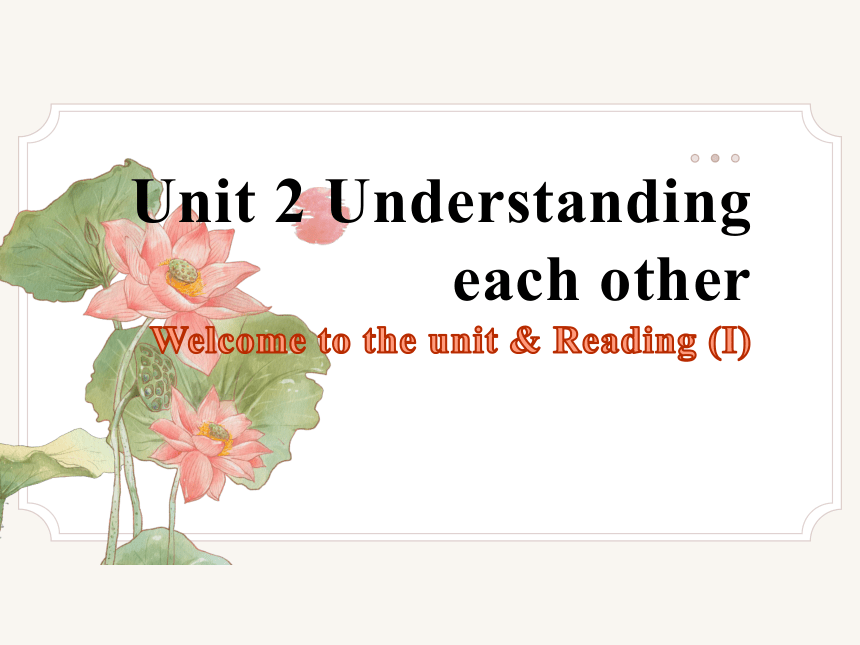 | |
| 格式 | pptx | ||
| 文件大小 | 4.4MB | ||
| 资源类型 | 教案 | ||
| 版本资源 | 牛津译林版(2019) | ||
| 科目 | 英语 | ||
| 更新时间 | 2025-01-15 08:26:17 | ||
图片预览

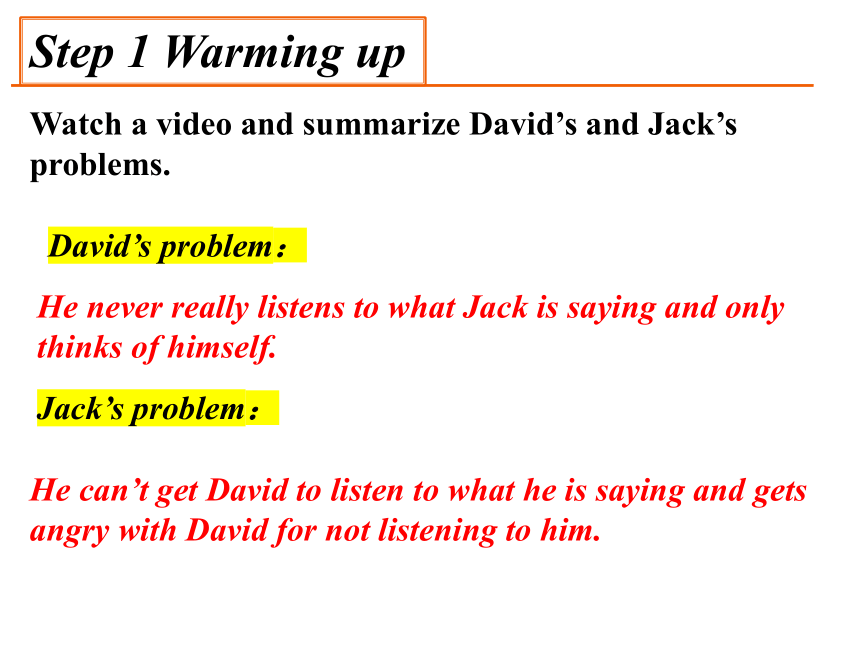
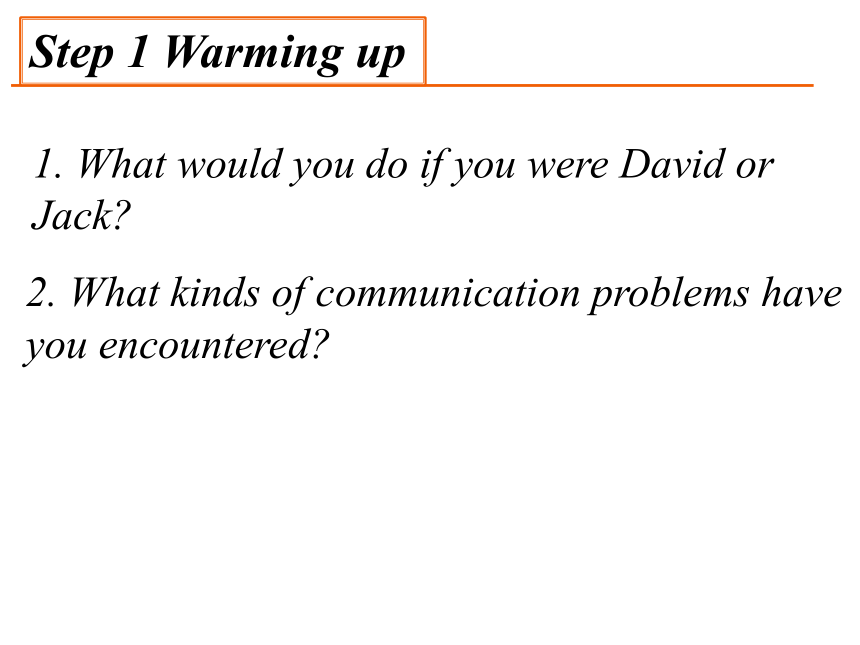
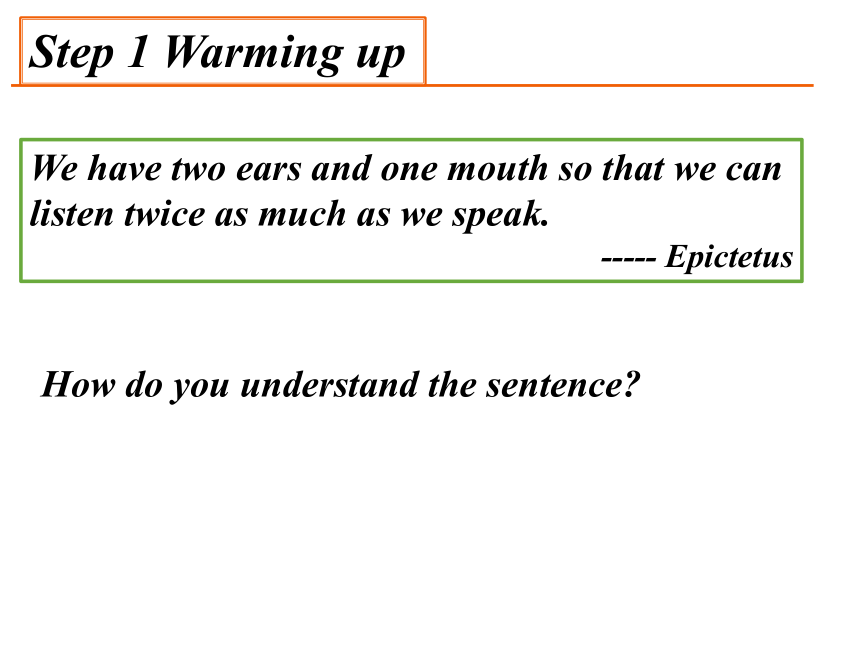
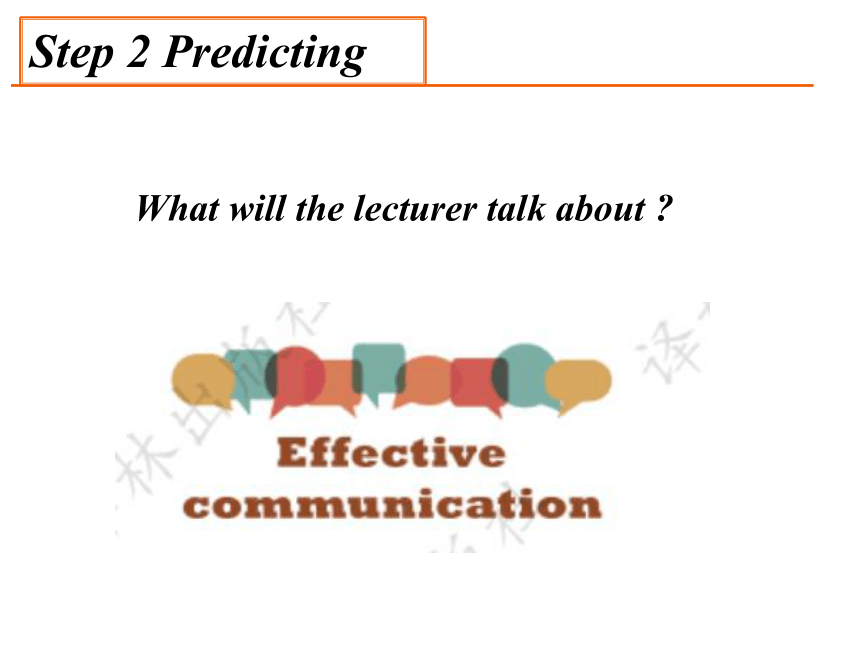
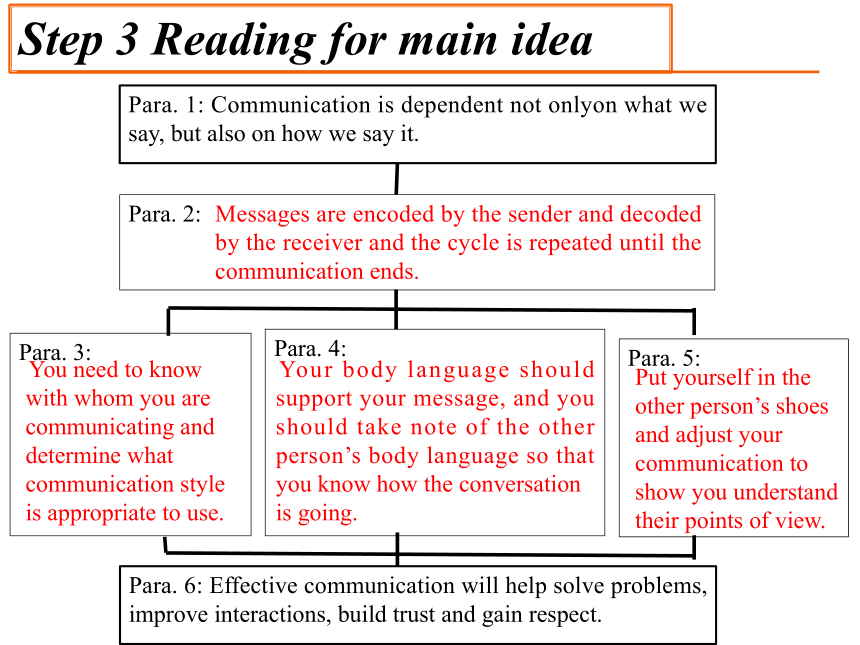
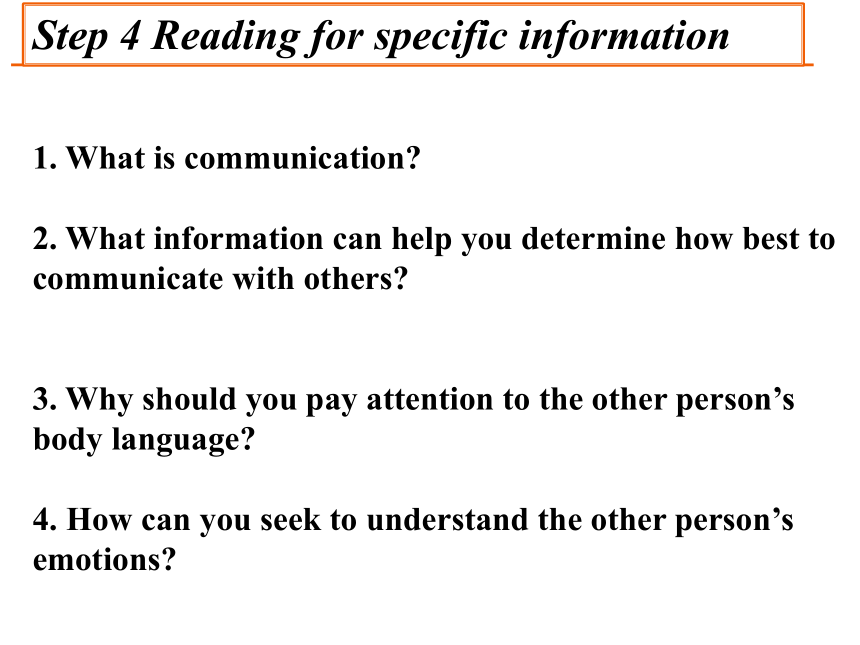
文档简介
(共14张PPT)
Unit 2 Understanding each other
Welcome to the unit & Reading (I)
Step 1 Warming up
Watch a video and summarize David’s and Jack’s problems.
David’s problem:
He never really listens to what Jack is saying and only thinks of himself.
Jack’s problem:
He can’t get David to listen to what he is saying and gets angry with David for not listening to him.
Step 1 Warming up
1. What would you do if you were David or Jack
2. What kinds of communication problems have you encountered
Step 1 Warming up
We have two ears and one mouth so that we can listen twice as much as we speak.
----- Epictetus
How do you understand the sentence
Step 2 Predicting
What will the lecturer talk about
Step 3 Reading for main idea
Para. 1: Communication is dependent not onlyon what we say, but also on how we say it.
Para. 2:
Messages are encoded by the sender and decoded by the receiver and the cycle is repeated until the communication ends.
Para. 3:
Para. 4:
Para. 5:
You need to know with whom you are communicating and determine what
communication style is appropriate to use.
Your body language should support your message, and you should take note of the other person’s body language so that you know how the conversation
is going.
Put yourself in the other person’s shoes and adjust your communication to
show you understand their points of view.
Para. 6: Effective communication will help solve problems, improve interactions, build trust and gain respect.
Step 4 Reading for specific information
1. What is communication
2. What information can help you determine how best to communicate with others
3. Why should you pay attention to the other person’s body language
4. How can you seek to understand the other person’s emotions
Step 4 Reading for specific information
1. What is communication
2. What information can help you determine how best to communicate with others
Communication is the process of exchanging information between a sender and a receiver.
We need to know with whom we are communicating: their age or position, their relationship with you, their expectations and cultural background.
Step 4 Reading for specific information
3. Why should you pay attention to the other person’s body language
4. How can you seek to understand the other person’s emotions
It will give us clues as to whether the conversation is going well or not.
We can seek to understand the other person’s emotions by putting ourselves in their shoes and looking at the situation from their perspective.
Step 4 Reading for specific information
Focus on Paragraph 4 and complete the following chart.
Body language Possible meanings
A smile
Looking away with your arms folded
A confused expression
Add more information to the chart.
Being intentive
Disinterest & distrust
Being confused
Step 5 Discussing for better understanding
Discuss the following questions in groups.
1. How can we apply the ideas mentioned in the lecture transcript to cross-cultural communication Give some examples.
2.What other suggestions can you give on how to become an effective communicator
Step 6 Summarizing
What have you learned in this period
Assigning homework
1. Read the passage carefully and accumulate some useful expressions.
2. Write a summary for the passage according to the chart in A1.
感谢观看
Unit 2 Understanding each other
Welcome to the unit & Reading (I)
Step 1 Warming up
Watch a video and summarize David’s and Jack’s problems.
David’s problem:
He never really listens to what Jack is saying and only thinks of himself.
Jack’s problem:
He can’t get David to listen to what he is saying and gets angry with David for not listening to him.
Step 1 Warming up
1. What would you do if you were David or Jack
2. What kinds of communication problems have you encountered
Step 1 Warming up
We have two ears and one mouth so that we can listen twice as much as we speak.
----- Epictetus
How do you understand the sentence
Step 2 Predicting
What will the lecturer talk about
Step 3 Reading for main idea
Para. 1: Communication is dependent not onlyon what we say, but also on how we say it.
Para. 2:
Messages are encoded by the sender and decoded by the receiver and the cycle is repeated until the communication ends.
Para. 3:
Para. 4:
Para. 5:
You need to know with whom you are communicating and determine what
communication style is appropriate to use.
Your body language should support your message, and you should take note of the other person’s body language so that you know how the conversation
is going.
Put yourself in the other person’s shoes and adjust your communication to
show you understand their points of view.
Para. 6: Effective communication will help solve problems, improve interactions, build trust and gain respect.
Step 4 Reading for specific information
1. What is communication
2. What information can help you determine how best to communicate with others
3. Why should you pay attention to the other person’s body language
4. How can you seek to understand the other person’s emotions
Step 4 Reading for specific information
1. What is communication
2. What information can help you determine how best to communicate with others
Communication is the process of exchanging information between a sender and a receiver.
We need to know with whom we are communicating: their age or position, their relationship with you, their expectations and cultural background.
Step 4 Reading for specific information
3. Why should you pay attention to the other person’s body language
4. How can you seek to understand the other person’s emotions
It will give us clues as to whether the conversation is going well or not.
We can seek to understand the other person’s emotions by putting ourselves in their shoes and looking at the situation from their perspective.
Step 4 Reading for specific information
Focus on Paragraph 4 and complete the following chart.
Body language Possible meanings
A smile
Looking away with your arms folded
A confused expression
Add more information to the chart.
Being intentive
Disinterest & distrust
Being confused
Step 5 Discussing for better understanding
Discuss the following questions in groups.
1. How can we apply the ideas mentioned in the lecture transcript to cross-cultural communication Give some examples.
2.What other suggestions can you give on how to become an effective communicator
Step 6 Summarizing
What have you learned in this period
Assigning homework
1. Read the passage carefully and accumulate some useful expressions.
2. Write a summary for the passage according to the chart in A1.
感谢观看
同课章节目录
